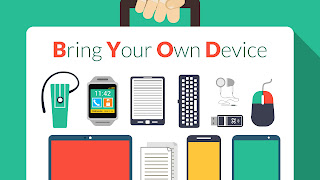Twitter Feed
Procurement in a Virtual Business World
Today, companies are undergoing a dramatic change in their environment and processes. Many groups these changes together as “Digital Transformation,” but that industry buzzword fails to describe the essential details…
Taking the Canadian Insurance Industry Digital
“Digital disruption isn’t just for hip start-ups. Incumbents can not only compete but actually lead radical industry change if they pay attention to the way their business model is shifting…
#DigitalTransformation Means Hybrid IT and Multipath
The cloud is ubiquitous in today’s business world. This operational model is changing both data center operations and application development processes across multiple domains. As the manager of data centers…
Wasabi Hot Innovations Tour: How “Hot Cloud Storage” Changes Everything!
Digital storage requirements are growing exponentially. Budgets simply can’t keep up and existing Federal Data Center Consolidation Initiative (FDCCI), “Cloud First” Policy, Federal IT Acquisition Reform Act (FITARA) and Modernizing…
(Lack of) Patch Management Highlighted in US Congress
According to the former Equifax CEO’s testimony to Congress, one of the primary causes of this now infamous data breach was the company’s failure to patch a critical vulnerability in…
Experience “The Big Pivot”
Graeme Thompson, SVP/CIO Informatica The Big Pivot Podcast explores Digital transformation and its effect on every business in every industry. In exploring the business benefits of data-driven transformation, it is…
Innovation At The Seams
by Kevin L. Jackson & Dez Blanchfield Today’s real business innovation is happening at the seams of industries. Moreover, after listening to this podcast between Sanjay Rishi, GM Global Cloud…
Digital Transformation & Intelligent Automation
By Kevin Jackson & Dez Blanchfield Digital Transformation often needs Intelligent Automation. This type of change is the focus of a recent “Pioneers of Possible” podcast. In discussion…
The Ascent of Object Storage
Over the past few years, the data storage market has changed radically. The traditional hierarchy of directories, sub-directories, and files referred to as file storage has given way to object…
The Deer Hunters: An Information Technology Lesson
by Kevin Jackson & Dez Blanchfield In episode four of the “Pioneers Of Possible” podcast series, Dez Blanchfield caught up with Max Michaels, General Manager, IBM Network Services in…
- Increased employee mobility (63%), satisfaction (56%) and productivity (55%) dominate as the top drivers of BYOD. These employee related drivers are considered more important than reduced costs (47%).
- Security (39%) and employee privacy (12%) are the biggest inhibitors of BYOD adoption.
- 20% of surveyed organizations have suffered a mobile security breach, primarily driven by malware and malicious WiFi.
- Security threats to BYOD impose heavy burdens on organizations’ IT resources (35%) and help desk workloads (27%).
- Despite increasing mobile security threats, data breaches and new regulations, only 30% of organizations are increasing security budgets for BYOD in the next 12 months and 37% have no plans to change their security budgets.
- 72% – Data leakage/loss
- 56% – Unauthorized access to company data and systems
- 54% – Downloading of unsafe apps or content
- 52% – Malware
- 50% – Lost or stolen devices
- 49% – Vulnerability exploitation
- 48% – Lack of control on endpoint security
- 39% – Infrequent software updates
- 38% – Compliance
1. Create your policy before procuring technology: To effectively use mobile device management (MDM) technology for employee owned devices Policy must precede technology. Also note that these policies will have broad corporate-wide implications for IT, HR, legal, and security.
- Mobile device management
- Application security assessments
- Application testing services
- Application source code security assessments; and
- Embedded device security.
This post was brought to you by IBM Global Technology Services. For more content like this, visit ITBizAdvisor.com.
( Thank you. If you enjoyed this article, get free updates by email or RSS – © Copyright Kevin L. Jackson 2017)
Cloud Computing
- CPUcoin Expands CPU/GPU Power Sharing with Cudo Ventures Enterprise Network Partnership
- CPUcoin Expands CPU/GPU Power Sharing with Cudo Ventures Enterprise Network Partnership
- Route1 Announces Q2 2019 Financial Results
- CPUcoin Expands CPU/GPU Power Sharing with Cudo Ventures Enterprise Network Partnership
- ChannelAdvisor to Present at the D.A. Davidson 18th Annual Technology Conference
Cybersecurity
- Route1 Announces Q2 2019 Financial Results
- FIRST US BANCSHARES, INC. DECLARES CASH DIVIDEND
- Business Continuity Management Planning Solution Market is Expected to Grow ~ US$ 1.6 Bn by the end of 2029 - PMR
- Atos delivers Quantum-Learning-as-a-Service to Xofia to enable artificial intelligence solutions
- New Ares IoT Botnet discovered on Android OS based Set-Top Boxes


